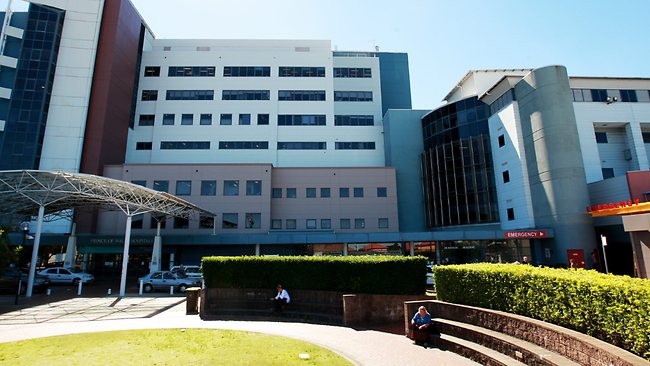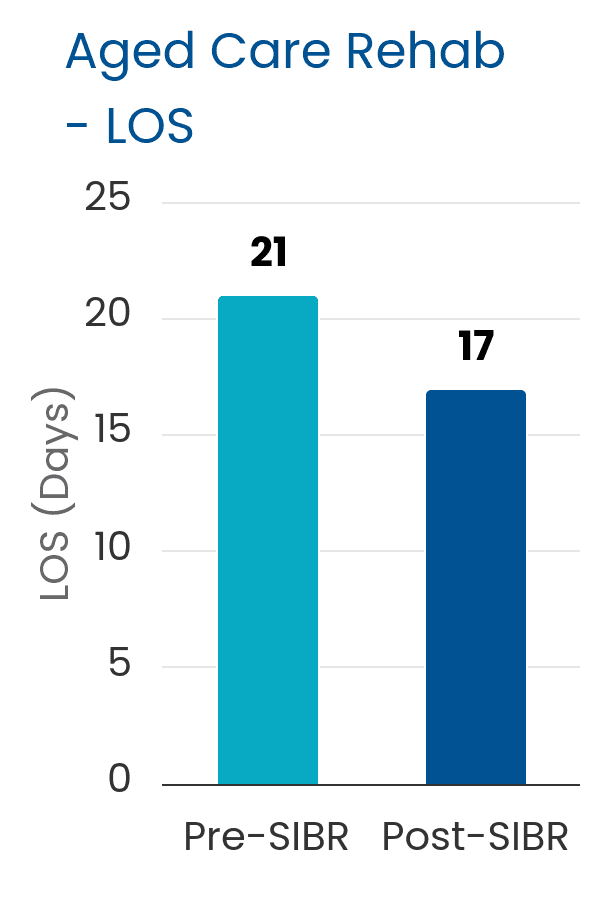
SIBR rounds in Aged Care Rehab reduce length of stay, 10am discharges & patient satisfaction

Top Results
Overview
The Aged Care Rehab unit wanted to improve efficiency and reduce risks, while putting patients at the center of their care. The team wanted to come together for SIBR rounds and promote a more open and combined conversation with patients and their carers, with everybody imparting the same information in real-time.
Objectives
The team believed they could use SIBR rounds to reduce the amount of time spent discussing patients' progress amongst individual multi-disciplinary teams, thereby allowing more time for actual therapy and care delivery.
Methods
A team from the Aged Care Unit attended a three day residential training led by 1Unit staff, supported by the state's Clinical Excellence Commission (CEC). After this, the team returned to their unit and began to implement SIBR rounds with additional support from the CEC support team.
The Unit brought together the relevant stakeholders to finalize customizations of the key SIBR tools and job aids that had begun at the residential training. The Unit agreed on the preferred SIBR start time and expected participation. Other Unit staff were trained in the SIBR process with practice sessions to gain familiarity with the process.
Mealtimes and therapy sessions were optimized during the morning to support the delivery of SIBR to the most patients possible, without causing interference to daily tasks.
New whiteboards were added to patient areas to enable the team to document decisions made during SIBR around current mobility and functional status, patient goals, the care plan and discharge plan.
Results
Throughput
Length of Stay data- before SIBR 21 days, after SIBR 17 days
10am discharges 36.4% (hospital average 15.4%)
Adverse Events
Pressure injuries reduced to 0
Compliance
VTE prophylaxis rates reached 100% compliance
Staff Satisfaction
Reported improvements in teamwork and positive unit dynamics
Nursing staff 'stepping up', having increased confidence in knowledge and skills, patient advocacy
Reduction in patient-nurse 'calls'
Reduction in patient-physician 'calls/conferences'
Reduction in calls for clinical review
Patient Satisfaction
Physician knowledge of your condition: Fully agree Pre = 19%, Post = 80%
Nurse knowledge of your condition: Fully agree Pre = 23%, Post = 95%
Confidence and trust in your care team: Fully agree Pre = 52%, Post = 96%
Felt involved in decisions: Fully agree Pre = 36%, Post = 76%
Opportunity to speak to care team: Fully agree Pre = 62%, Post = 90%
Conclusion
The Aged Care Rehab Unit planned to maintain their SIBR rounds cognizant of the successes they had experienced. The acknolwedged that they could be be more streamlined and efficienct in the process but were keen to continue to optimize the process. The Unit had advocated for the program to be rolled out to other areas of aged care and beyond.




